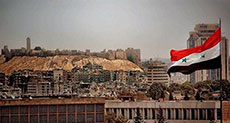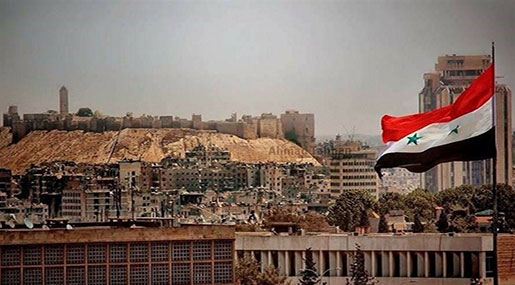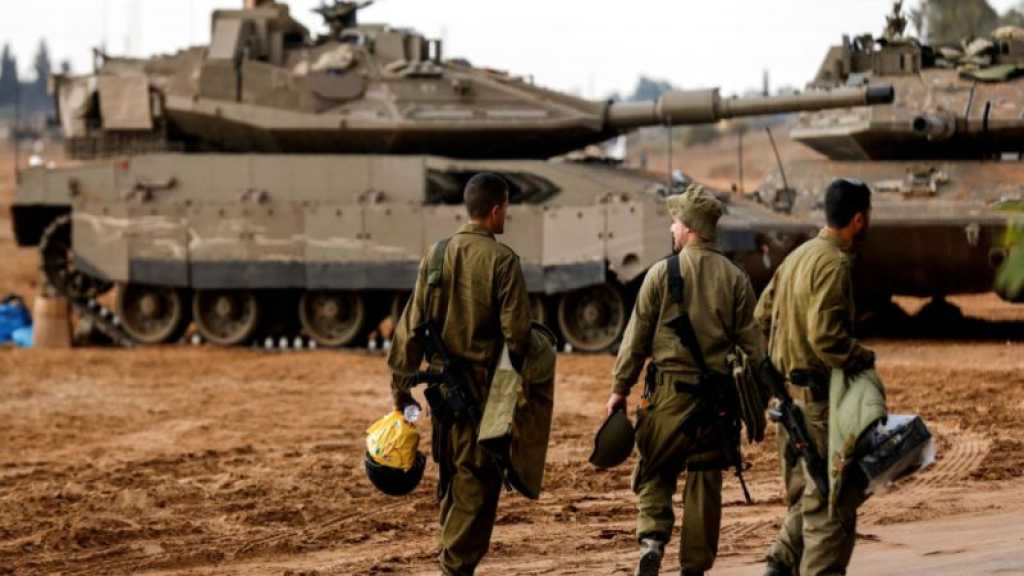Aleppo ... The Knockout

Elie Hanna
News quickly flooded out of the city of Aleppo yesterday evening. The remaining kilometers under the control of the insurgent fighters turned into impossible meters, strangling the remaining militants. A divided city for four years and five months, which posed a threat to the entire country finally became one.

This is a geographical unity confirming the unity of the Syrian territory in the face of efforts designed to divide it, ruining the hopes of those who were yearning for a different outcome in the capital of the north. The driving forces behind the threat to the Syrian state that sponsored the opposition were dependent on a different outcome. And their red lines have been crossed in the battlefield ... with a knockout blow.
A new date has been enshrined in Aleppo's history. The tragedy of July 19, 2012 - the day thousands of militants stormed the city's eastern neighborhoods - became a distant memory. Over the past few hours, an end has been declared to the NATO/Gulf-backed invasion aimed at overthrowing the Syrian government through the country's northern gate. In what marks a knockout blow for the militants, the Syrian army and its allies concluded the largest and toughest battle in the history of the Syrian war.
From that day during the month of Ramadan over four years ago, Aleppo was adamant to survive. The western neighborhoods were gripped by a bloody siege [following the 2012 militant invasion]. Only one million out of the six million residents remained in the city with the rest scattering to secure provinces of the country. The killing machine in Aleppo's east forced hundreds of thousands to flee to the west. The rest of the civilians shared neighborhoods gripped by daily deaths and existential danger.
Tens of thousands remained in the east under the influence of warlords that turned their alleys into military markets importing material and humanitarian support from countries that transformed the whole city to a spearhead for toppling the state and one of the capitals of the Syrian division. A fragmented Aleppo existed for fifty-three months. Its proximity to the Turkish border served as the opposition's lifeline toward Idlib and Hama. Syria's second capital was the site of massacres perpetrated by militants against the military, police, and civilians, accused of being allied to the state.
Aleppo still remembers the months-long siege of its western neighborhoods before the opening of the Athraya-Khanasser-Sfeira road by the army and its allies. That was the road that was repeatedly closed, sometimes by the "Nusra Front" and its allies and other times by "Daesh".
During those days, Aleppo's residents only dreamt of receiving their daily bread from trucks that crossed hundreds of kilometers to supply the markets and hospitals with food, fuel and medicine. A few weeks ago, the city was the site of severe battles, threatening its existence along Aleppo's western front. The army and its allies withstood and prevented the great collapse. But it was no longer a matter of preserving the status quo.
The Damascus alliance decided to end the militant "backbone of the north", which produced a new "invasion" every month under regional and international auspices. The decision, which dozens of meetings and UN resolutions almost prevented, was made. Previously, such decisions that involved military plans as well as intelligence and logistical support for massive attacks, were broken at the walls of the historic city due to external pressures. On October 26, the implementation commenced from the northern gate of the eastern neighborhoods.
The Hanano area was liberated, and then other parts followed until the northern section was isolated within 48 hours. In a few days, the army was encroaching on all of the neighborhoods. The last clashes took place yesterday in Joyoub in the Bustan Al Qasr neighborhood.
However, for Damascus and its allies the occupation of the city of Palmyra by "Daesh" is a lump on the Aleppo victory. According to strategic, field, and political calculations, the "Pearl of the Desert" is not as important as Aleppo nor does its downfall have the same effect. This time the gunmen did not succeed in forcing the Syrian state to shift its military recourses from one front to another, as was the case with the downfall of Idlib province in March 2015 [except for Kefraya and Foua].
The first goal of the Palmyra invasion is to reduce the effects of the Aleppo victory, psychologically and morally. It showed that "Daesh", which is supposed to be "living its last days", still has the initiative. The group's ability to get out of the intensive care room is not the result of its own strength.
While an existential battle is threatening Daesh in Mosul, Raqqa, and Al Bab, the terrorist group was able to move the battle away from northern Syria thanks to the objective conditions created by Washington, which are designed to "protect its back". Daesh realized that the battle of Raqqa is not serious. There was no imminent danger against its capital, and "coalition" warplanes virtually disappeared from the skies.
The safe movement of Daesh fighters that went on for days, allowed the group to assemble its forces between Deir Ezzour and Raqqa before launching a fierce attack on the mountains as well as the oil and gas fields surrounding Palmyra before entering the city.
Collaboration between Washington and the Emirate of Al Baghdadi is not new. The US administration was explicit in its statements since the formation of the so-called coalition against Daesh: We are not interested in striking Daesh's targets at the points of contact or danger against the Syrian army.
The clear priority for the Western alliance against Damascus is weakening the Syrian army and all that affects the cohesion of the state and its geographical, economic and political ability. Washington will not save an opportunity for the sake of it.
Going back to the state of affairs along today's frontlines, we see that the "moderate" or "jihadist" card - Jabhat Fateh Al Sham/Nusra - lost in the areas surroundings Damascus from Darya to Khan Al Shaih in the south, and Daraa.
The same goes for the last two "invasions" in Aleppo and another similar one in Hama. So, the most effective card from Iraq -"Daesh"- appeared in Syria. Terrorism, which is praised by the US and filtered through the use of different titles - organizations following the plans of the pentagon or those that fall in the framework of the Central Intelligence Agency's projects, and which are publicly allied with the "Nusra" and its affiliates - are in a coma today.
Washington is interested in filling the vacuum with "terrorists", and it is not interested in breaking any organization for the sake of Damascus or its allies. Therefore, we see the battle of cameras and data in Raqqa, and we have followed the fading of the roar of American jets over Mosul in recent days.
On September 18, "NATO" planes burned the Al Therdah Mountains in Deir Ezzour, inflicting dozens of casualties on the Syrian army. On that day, the siege around Aleppo was tightening while the safe areas around Castello were widening, in conjunction with a discontinuous ceasefires and Russian-American negotiations in Geneva. The American message has been received: Aleppo is a red line.
In an advanced response away from Aleppo - where Moscow imposed as a fait accompli battle - comes the Palmyra invasion. It serves to remind us of the fall of Kasab and part of the Latakia countryside following the liberation of Yabroud in Qalamoun and Kalaat Al Hosn in Homs in March 2014.
But today, employing the internationally recognized "fighters" on the battlefield is not possible, at least for gains equivalent to those of Aleppo.
Practically speaking, Palmyra is in the hands of Daesh again. But according to sources on the ground there is no danger of imminent collapse similar to that of last year, which stretched from two villages in Homs's eastern countryside, to the international road and the Qalamoun area, and even the Western mountain range reaching the Lebanese border.
Sources reveal that the "Nusra Front" was planning and preparing for an attack on the Khanasser road to cut the supply line to the city of Aleppo. This scenario was repeated on multiple occasions, but its success was short-lived lasting only a few days.
The desperate attack on Palmyra will not be the last. In the ongoing war during which the militants and their backers work on opening new fronts - from the countryside of Hama to the "battle of Al Bab" to the south of Syria. The southern-most part of Syria is ever-present in the calculations of the Israelis and the US-led Military Operations Center [MOC] based in Amman.
Aleppo has been liberated with all of the political and battlefield perks. The war has resulted in great strides, tipping the balance in favor of Team Damascus over its opponents ... and tomorrow is another day of battles.
Source: Al-Akhbar Newspaper, Translated and Edited by website team
Comments




